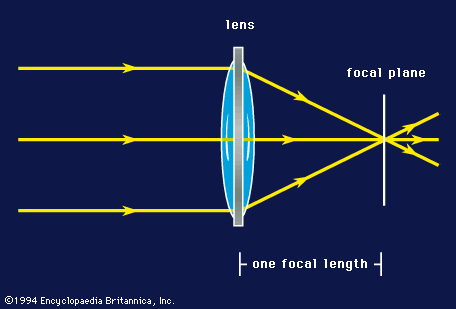Have you ever looked up at the night sky and wondered how people see distant stars and planets so clearly? A refracting telescope might be the key to unlocking those amazing views.
But what exactly is a refracting telescope, and how does it work? If you’re curious about how this simple yet powerful device can bring the universe closer to you, keep reading. By the end of this article, you’ll understand the basics of refracting telescopes and why they remain a favorite for stargazers everywhere.
Ready to discover how you can turn your own eyes into a window to the stars? Let’s dive in.
Basics Of Refracting Telescopes
Refracting telescopes use lenses to gather and focus light. They have been important tools in astronomy for centuries. Understanding their basics helps to see how they bring distant objects closer. These telescopes work by bending light through glass lenses. This bending is what makes distant stars and planets visible.
Each part of a refracting telescope plays a key role. Together, they collect light and create clear images. The design is simple but effective. This simplicity makes refracting telescopes a great choice for beginners and hobbyists.
How Light Bends Through Lenses
Light changes direction when it passes through glass. This change is called refraction. In a refracting telescope, light enters the front lens, called the objective lens. The lens bends the light rays to meet at a point. This point is where the image forms. The bending helps to focus faint light from distant objects.
The shape of the lens controls how much the light bends. Convex lenses, which are thicker in the middle, bend light inward. This bending focuses the light into a sharp image. Without this effect, distant stars would appear blurry or invisible.
Main Components Explained
The objective lens is the largest lens in the telescope. It collects light from the object being observed. The eyepiece lens sits at the opposite end. It magnifies the focused light to make the image larger and clearer. The tube holds these lenses in place and blocks outside light.
Some refracting telescopes also have a focusing mechanism. This allows small adjustments to sharpen the image. The mount supports the telescope and helps point it at different parts of the sky. Each component works together to deliver clear views of the universe.
How Refracting Telescopes Work
Refracting telescopes work by bending light to create clear images of distant objects. They use lenses to gather and focus light. This process allows viewers to see faraway stars, planets, and other space objects in detail. Understanding the parts of a refracting telescope helps explain how it forms these images.
Role Of Objective Lens
The objective lens is the main lens at the front of the telescope. It collects light from a distant object. The lens bends, or refracts, this light to focus it into a small point. This focused light creates a clear and bright image inside the telescope.
The size of the objective lens affects how much light the telescope can gather. A larger lens collects more light, making faint objects easier to see. The quality of this lens is important for sharp and clear images.
Function Of Eyepiece Lens
The eyepiece lens sits near the telescope’s viewing end. It magnifies the image created by the objective lens. This makes small or distant objects appear larger and easier to study.
Different eyepieces provide different levels of magnification. Swapping eyepieces changes how close or wide the view appears. The eyepiece also helps focus the image so it looks sharp and clear to the eye.
Historical Milestones
The history of the refracting telescope tells a story of curiosity and discovery. This simple yet powerful tool changed how humans view the universe. From early ideas to famous instruments, the refracting telescope has shaped astronomy and science.
Early Inventors And Innovations
The refracting telescope began in the early 1600s. Hans Lippershey, a Dutch lens maker, is often credited as the first to create a practical design. Around 1608, he applied for a patent for his device. Soon after, Galileo Galilei improved the design and used it to study the night sky.
Galileo’s telescope showed the moons of Jupiter and the phases of Venus. These discoveries supported the idea that Earth is not the center of the universe. Later, Johannes Kepler designed a better version using two convex lenses. His design provided clearer and wider views of space.
Famous Refracting Telescopes
Several famous refracting telescopes have made important contributions to science. The largest refractor ever built was the Yerkes Observatory telescope. It has a lens 40 inches wide and started working in 1897. Many discoveries about stars and galaxies came from this telescope.
Another well-known example is the Great Paris Exhibition Telescope of 1900. It had a huge lens and was used to observe planets and stars. Though heavy and hard to move, it showed the power of large refractors. These telescopes helped scientists learn more about the universe’s vastness.

Advantages Of Refracting Telescopes
Refracting telescopes offer several clear advantages that make them popular for beginners and experienced users alike. Their design brings specific benefits that enhance the viewing experience. These benefits focus on image clarity and ease of use. Understanding these strengths helps in choosing the right telescope.
Sharp Image Quality
Refracting telescopes use lenses to bend light and form images. This design produces very sharp and clear images. The lenses reduce distortions like blurring or smudging. Objects seen through a refractor often appear bright and detailed. This makes them excellent for viewing planets and the moon. The simple optical path helps maintain image quality over time.
Low Maintenance Needs
Refractors require less care than other types of telescopes. Their sealed tube design keeps dust and dirt out. This means less cleaning is needed. The lenses are fixed and rarely go out of alignment. You do not need to adjust or collimate the optics often. This makes refracting telescopes easy to use for beginners and busy users.
Limitations To Consider
Refracting telescopes have been popular for centuries. They use lenses to bend light and create images. Despite their usefulness, these telescopes have some limits. Understanding these drawbacks helps you choose the right telescope for your needs.
Chromatic Aberration
One big issue is chromatic aberration. This happens because lenses bend different colors of light unequally. The result is blurry images with color fringes around bright objects. It can make stars look like they have halos. Special lenses reduce this problem but do not eliminate it entirely.
Size And Weight Challenges
Refracting telescopes get heavy and long as they grow bigger. Large lenses are hard to make and support. This adds weight and makes the telescope harder to move. Mounting a big refractor needs sturdy equipment. These factors limit how large refracting telescopes can be.
Popular Uses Today
Refracting telescopes remain popular today for many reasons. They offer clear views and are easy to use. People of all ages enjoy them for different purposes. The following sections show some popular uses of refracting telescopes today.
Astronomy And Stargazing
Refracting telescopes help people see planets, stars, and the moon. They show bright and sharp images of the night sky. Many use them to watch events like eclipses or meteor showers. They are perfect for spotting details on the moon’s surface.
Educational Applications
Schools and science centers use refracting telescopes to teach students. They help explain space and light in a simple way. Students learn by observing real objects in the sky. These telescopes make science lessons exciting and hands-on.
Amateur Astronomy
Hobbyists and beginners prefer refracting telescopes for their ease of use. These telescopes require little maintenance and give clear views. Many enjoy exploring the stars without complex equipment. Refractors make astronomy accessible and fun for everyone.
Choosing The Right Refracting Telescope
Choosing the right refracting telescope matters for a good viewing experience. A proper telescope fits your needs and skill level. It helps you see clear images of stars and planets. Many options exist, so focus on what suits you best.
Key Features To Look For
Start with the aperture size. Larger apertures show more light and better details. Consider the telescope’s focal length. It affects the magnification and field of view. Check the quality of the lenses. Good glass reduces blur and improves sharpness. Look for sturdy build and easy mounting. A stable setup means steady views and less shake.
Budget-friendly Options
Many affordable refracting telescopes offer good quality for beginners. Choose models with moderate aperture and simple design. These are easier to use and carry. Avoid very cheap telescopes with poor optics. They cause frustration and poor images. Look for trusted brands with good reviews. This ensures better performance within your budget.

Care And Maintenance Tips
Proper care keeps your refracting telescope clear and working well. Clean lenses and safe storage protect your investment. Small efforts extend the life of your telescope and improve viewing quality.
Cleaning Lenses Safely
Use a soft brush to remove dust gently. Avoid touching lenses with fingers. Use lens cleaning solution and microfiber cloth for smudges. Do not use household cleaners or paper towels. Clean lenses only when necessary to avoid scratches.
Storage Recommendations
Store your telescope in a dry, dust-free place. Use a protective cover or case to keep dirt away. Avoid places with high humidity or direct sunlight. Keep lenses capped when not in use. Store in a stable spot to prevent falls or damage.

Frequently Asked Questions
What Is A Refracting Telescope Used For?
A refracting telescope is mainly used to observe distant objects like stars and planets. It uses lenses to focus light and create clear images. This makes it ideal for astronomy and terrestrial viewing.
How Does A Refracting Telescope Work?
It works by bending light through convex lenses. The objective lens gathers light and focuses it to form an image. The eyepiece lens magnifies this image for the viewer’s eye.
What Are The Advantages Of Refracting Telescopes?
They offer sharp, high-contrast images with minimal maintenance. Their sealed tube prevents dust and moisture. Refractors are also durable and easy to use for beginners.
What Are The Limitations Of Refracting Telescopes?
Refractors can suffer from chromatic aberration, causing color fringing. Large lenses are expensive and heavy. They also have size limits compared to reflecting telescopes.
Conclusion
A refracting telescope uses lenses to bend light and create clear images. It helps us see distant stars and planets up close. These telescopes are simple and reliable for beginners. They show bright and sharp views of the night sky.
Understanding how they work makes stargazing more fun. Try exploring the stars with a refracting telescope. It opens a window to the universe right from your backyard.



